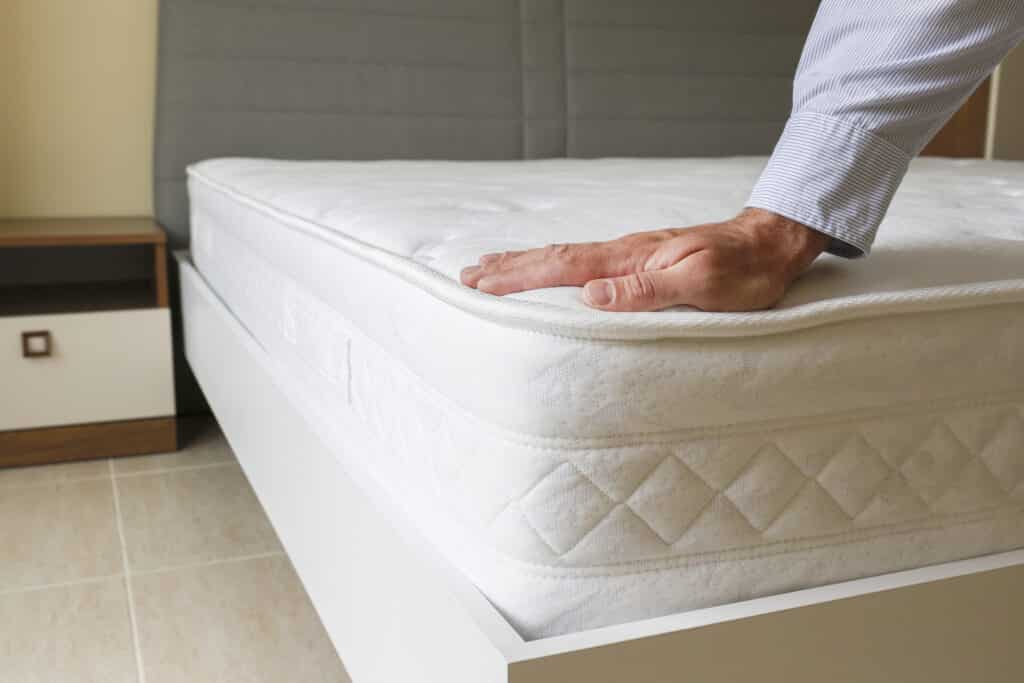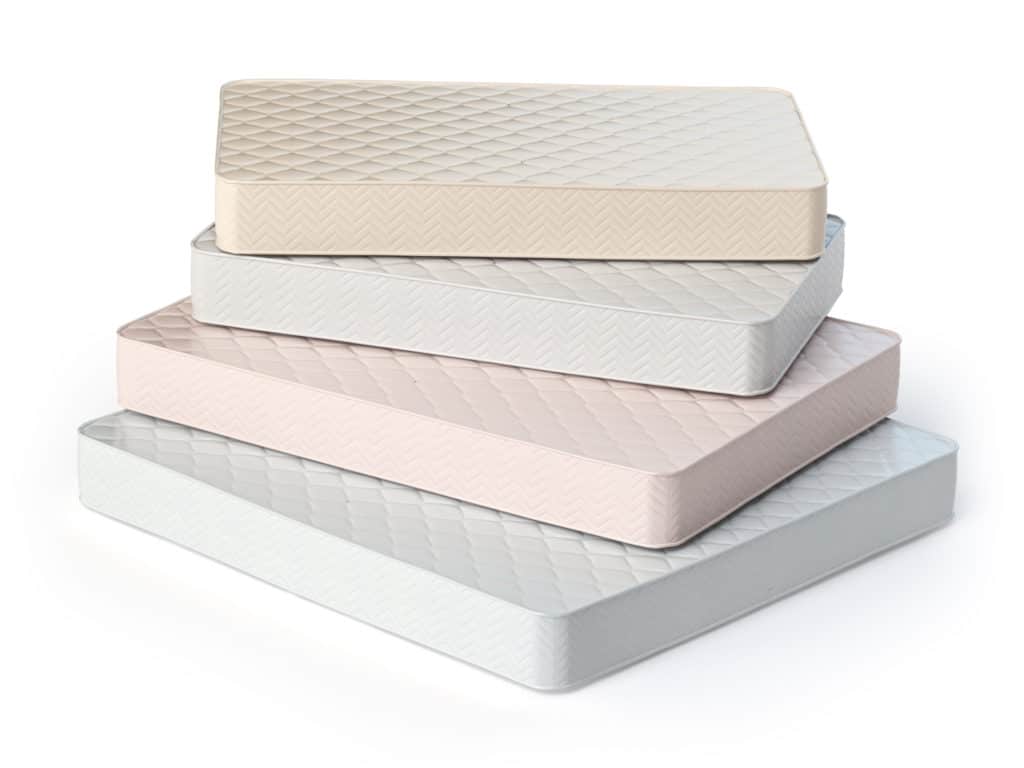Are you in need of a new mattress? Before you make that purchase, there are several important considerations to keep in mind. In this article, we will guide you through the process of buying a mattress by providing you with valuable insights and tips. By understanding your sleeping habits and preferences, determining the firmness level that works for you, finding the right mattress size, considering your sleep position, addressing specific health concerns, testing mattresses in-store, researching customer reviews and ratings, setting a budget, and considering warranty and return policies, you can make an informed decision that will result in a comfortable and restful night’s sleep.
When it comes to purchasing a mattress, one size does not fit all. It is crucial to assess your own sleeping habits and preferences before making a decision. Are you someone who prefers to sleep on their side or back? Do you have any specific health concerns such as back pain or allergies? These factors will greatly influence the type of mattress that is best suited for your needs. Additionally, determining the firmness level that works for you is essential. Whether you prefer a plush feel or something more supportive and firm can affect how well-rested you feel each morning. By taking these considerations into account along with other important factors like mattress size and budget constraints, you can ensure that your investment in a new mattress pays off in terms of both comfort and quality sleep.
Assessing Your Sleeping Habits and Preferences
Before you make a decision, take a moment to reflect on your sleeping habits and preferences so that you can find the perfect mattress for your unique needs. Start by assessing your sleep environment. Consider factors such as the temperature of your bedroom, noise levels, and any potential allergens or irritants that may affect your sleep quality. Some people prefer a cooler sleep environment, while others find comfort in warmer temperatures. By understanding these aspects of your sleep environment, you can choose a mattress that helps create an ideal setting for restful nights.
Another important consideration is exploring different mattress materials. There are various options available, each offering distinct benefits and drawbacks. For example, memory foam mattresses conform to the shape of your body and provide excellent pressure relief. On the other hand, innerspring mattresses offer strong support and bounce but may not be as effective at isolating motion transfer. Latex mattresses are known for their durability and natural properties but tend to be more expensive. By researching and testing different materials, you can determine which one aligns best with your comfort preferences and budget constraints. Remember to also consider factors like firmness level and size when assessing mattress options based on your sleeping habits and preferences , as these factors can greatly impact your overall sleep quality and comfort. Additionally, don’t forget to read reviews and consider the warranty and return policy offered by the mattress manufacturer to ensure you are making a well-informed decision.
Determining the Firmness Level That Works for You

When choosing a mattress, it’s important to determine the firmness level that best suits your needs and preferences. The right firmness can provide you with customized support and ensure proper alignment of your spine during sleep. If you prefer a softer feel, consider a mattress with medium or plush firmness. This can help relieve pressure points and provide a cozy, cradling sensation that allows for deep relaxation. On the other hand, if you prefer more support and a firmer surface, opt for a mattress with medium-firm or firm firmness. This can help distribute your body weight evenly and prevent sinking into the bed too much, providing better overall support.
Another factor to consider when determining the firmness level is pressure relief. A mattress with the appropriate firmness can alleviate pressure on sensitive areas like shoulders, hips, and lower back. It should contour to your body shape while still maintaining adequate support. By reducing pressure points, you’ll experience less tossing and turning throughout the night, leading to improved sleep quality.
Finding the right firmness level for your mattress is crucial in ensuring a good night’s sleep. Consider your personal preferences regarding softness or supportiveness as well as how it affects pressure relief on different parts of your body. By taking these factors into account, you’ll be able to choose a mattress that provides customized support and optimal comfort for restful nights ahead.
Finding the Right Mattress Size
To find the right mattress size for you, picture yourself lying comfortably on a bed that perfectly accommodates your body and provides ample space to stretch out. One of the first considerations when it comes to finding the right mattress size is determining how much space you need. If you sleep alone and don’t move around a lot during the night, a twin or full-size mattress may be sufficient. However, if you share your bed with a partner or pets, or if you tend to toss and turn during sleep, a queen or king-size mattress would offer more room to spread out.
In addition to considering the amount of space you need, it’s also important to think about the thickness and materials of the mattress. Mattress thickness can vary greatly depending on personal preference and health conditions. Thicker mattresses generally provide more cushioning and support, which can be beneficial for individuals with back pain or joint issues. However, keep in mind that thicker mattresses might require deeper pocket sheets and could be harder to move around if needed.
When comparing mattress materials, consider factors such as durability, temperature regulation, and motion isolation. Memory foam mattresses are known for their ability to contour to your body shape while providing excellent motion isolation. On the other hand, innerspring mattresses offer good airflow but may not conform as closely to your body as memory foam does. Latex mattresses are known for their natural bounce and cooling properties but tend to be more expensive than other options.
By carefully considering your specific needs regarding size, thickness, and material of a mattress before making a purchase decision, you can ensure that your new bed provides optimal comfort and support for restful nights ahead.
Considering Your Sleep Position

Finding the right mattress size is important, but let’s not forget about considering your sleep position. If you are a side sleeper, you should look for a mattress that provides enough support to keep your spine aligned while also cushioning your shoulders and hips. A medium-soft to medium-firm mattress would be ideal for side sleepers as it allows for proper pressure relief and keeps the body in a neutral position throughout the night.
On the other hand, if you are a back sleeper, you need a mattress that offers adequate support to maintain the natural curve of your spine. A medium-firm to firm mattress is recommended for back sleepers as it prevents sinking too much into the bed and helps distribute weight evenly. It ensures that your body stays properly aligned, reducing any potential discomfort or pain.
Considering your sleep position when choosing a mattress is crucial because it directly affects how well-rested you feel in the morning. By selecting a mattress that caters to side sleepers or back sleepers specifically, you can improve your sleeping experience and wake up feeling refreshed and rejuvenated each day.
Addressing Specific Health Concerns
Addressing specific health concerns is essential when selecting the right mattress for your needs. If you suffer from allergies, it’s important to find a mattress that is hypoallergenic and resistant to dust mites. Look for materials such as latex or memory foam, as they are naturally resistant to allergens and provide a barrier against them. Additionally, consider getting a mattress with a removable and washable cover, so you can easily clean it and reduce the presence of allergens in your sleeping environment.
Managing back pain is another crucial factor to consider when choosing a mattress. Look for a mattress that provides adequate support to your spine and promotes proper alignment. Memory foam options are often recommended mattresses for back pain because they contour to the shape of your body and alleviate pressure points. Firmness level is also important – while some people find relief with firmer mattresses, others prefer medium or soft ones depending on their personal preferences and conditions. It’s always a good idea to test out different options before making a purchase, as everyone’s body is unique and what works for one person may not work for another. By considering these specific health concerns, you can ensure that you select a mattress that will help improve your overall sleep quality and well-being.
Understanding Different Mattress Types

When it comes to understanding different mattress types, you may be surprised to learn about the various options available and how they can impact your sleep quality. Two popular choices are innerspring mattresses and foam mattresses. Innerspring mattresses are made up of coils that provide support and bounce. They offer good airflow, which can help regulate your body temperature while you sleep. On the other hand, foam mattresses, such as memory foam or latex foam, conform to your body shape and distribute weight evenly. This can alleviate pressure points and reduce motion transfer, making them a great choice for couples.
If you prefer a firmer feel with some bounce, an innerspring mattress might be the right choice for you. However, if you want superior contouring and pressure relief, a foam mattress like memory foam or latex foam could be more suitable. Memory foam molds to your body’s contours and provides excellent support for those with back pain or joint issues. Latex foam is known for its responsiveness and durability. It offers a natural bounce along with good breathability that can keep you cool throughout the night.
Considering these differences between innerspring vs foam mattresses as well as latex vs memory foam options will help you make an informed decision based on your specific needs and preferences. Remember to take into account factors such as comfort level, firmness preference, support requirements, and any specific health concerns when choosing the best mattress type for a restful night’s sleep.
Testing Mattresses In-Store
While you’re at the store, why not try out different mattresses to see which one provides the perfect balance of comfort and support for a night of blissful sleep? Comfort testing is an essential step when buying a mattress. Lie down on each mattress and spend some time in different sleeping positions to get a feel for how it supports your body. Pay attention to pressure points – does the mattress alleviate or exacerbate them? You want a mattress that conforms to your body shape without causing discomfort. Don’t be shy about trying out various positions, such as side sleeping or back sleeping, to ensure the mattress is suitable for your preferred sleep position.
In addition to comfort testing, it’s important to consider mattress durability. A good-quality mattress should last you several years, so it’s worth checking its construction and materials. Look for signs of sturdiness and well-constructed edges that won’t sag over time. Ask the salesperson about the warranty and any guarantees offered by the manufacturer. A reputable company will stand behind their product and offer a reasonable warranty period. Remember, investing in a durable and comfortable mattress is an investment in your overall well-being and quality of sleep.
Researching Customer Reviews and Ratings
Researching customer reviews and ratings can provide valuable insights into the overall satisfaction and durability of a mattress before making a purchase. By reading about other customers’ experiences, you can gain a better understanding of how comfortable the mattress is and whether it meets your specific needs. Customer reviews often highlight important factors such as firmness level, support, and temperature regulation, which are crucial in determining if the mattress will provide a good night’s sleep for you. Additionally, customer feedback can also shed light on the product’s durability, giving you an idea of how long-lasting it is and whether it will maintain its quality over time.
When researching customer reviews and ratings, pay close attention to any recurring themes or patterns. If multiple people mention issues with sagging or lack of support after a short period of use, it might be an indication that the mattress has poor durability. On the other hand, if numerous customers rave about how comfortable and long-lasting their mattresses are, it’s a positive sign that you may have found a reliable option. Keep in mind that while individual experiences may vary, looking at trends in customer feedback can give you a general sense of what to expect from the mattress you’re considering purchasing. So take some time to read through various customer reviews and ratings to get an accurate picture of how satisfied others have been with their purchases before deciding on your own.
Setting a Budget
Now that you’ve done your homework on researching customer reviews and ratings, it’s time to move on to the next step in finding the perfect mattress: setting a budget. When it comes to buying a mattress, it’s essential to have a clear idea of how much you’re willing to spend. Setting a budget not only helps narrow down your options but also prevents you from overspending or being swayed by flashy marketing tactics.
One important aspect of setting a budget is understanding the different price ranges among mattress brands. Keep in mind that while well-known brands may come with a higher price tag, they often offer better quality and durability. However, this doesn’t mean you have to break the bank. With online shopping becoming increasingly popular, there are now more affordable options available without compromising on comfort and support. So whether you’re looking for a luxury mattress or something more budget-friendly, take the time to explore different brands and their offerings before making your final decision.
Considering Warranty and Return Policies
Once you’ve determined your budget, it’s crucial to carefully evaluate the warranty and return policies of different mattress brands. The warranty and return policies can give you peace of mind knowing that your investment is protected. Start by looking at the length of the warranty offered by each brand. A longer warranty usually indicates that the manufacturer has confidence in their product’s durability. Additionally, pay attention to what is covered under the warranty. Some warranties only cover manufacturing defects, while others may also include issues related to sagging or loss of support over time. It’s important to consider these factors as they directly impact the mattress lifespan and your overall satisfaction with the purchase.
Another aspect to consider when evaluating a mattress brand’s warranty and return policy is the quality of materials used in their products. A well-made mattress will typically have a longer lifespan than one made with lower quality materials. Look for information about the construction of the mattress, such as its layers and components. High-quality materials like memory foam or natural latex tend to be more durable and supportive over time. Additionally, check if there are any specific requirements or conditions for making a warranty claim or returning a mattress. Some brands may require you to use a specific foundation or bed frame in order for the warranty to remain valid. By taking into account both the quality of materials and specific terms outlined in the warranty and return policy, you can make an informed decision when purchasing a mattress that meets your needs and provides long-lasting comfort.
Conclusion
In conclusion, before purchasing a mattress, it is important to consider several factors. First, take into account your sleeping habits and preferences. Are you a side sleeper or do you prefer to sleep on your back? This will help determine the firmness level that works best for you. Additionally, consider the size of the mattress that will provide enough space for you to move comfortably during sleep.
Next, address any specific health concerns you may have. If you suffer from back pain or allergies, look for mattresses that offer proper support and are hypoallergenic. It is also essential to test out mattresses in-store by lying down on them for a few minutes to assess their comfort levels.
Furthermore, researching customer reviews and ratings can give valuable insights into the quality and durability of different mattress brands. Set a budget based on your financial situation and consider warranty and return policies offered by manufacturers.
By taking these considerations into account before buying a mattress, you can ensure that you make an informed decision that suits your individual needs and provides a comfortable night’s sleep. So go ahead, start exploring the options available and find the perfect mattress for yourself!


Wow, I never knew before that some mattress retailers can offer trial periods for customers. I will keep that in mind once I free up my schedule to look for a new mattress soon. I’d like to have a softer bed in order have a more relaxing time when watching TV in my room at night.